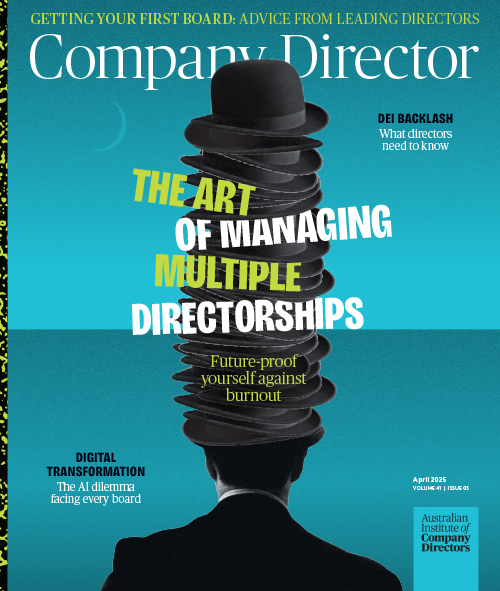A strategic board agenda can assist in achieving more effective meetings.
Presented by BoardPro
Boards need to focus on more than just the operational issues, and there are tools to help directors achieve that.
Steven Bowman FAICD, managing director of Conscious Governance, created the new strategic board agenda template available within BoardPro’s board management software. The need evolved after research showed boards need better focus.
“One of the biggest issues boards face is structuring their board meeting so they can get the most value from it,” says Bowman. “This is consistent with over 80 per cent of the thousands of boards we see.”
The board agenda is the key tool to accomplish this, explains Bowman. “In too many cases, the agenda highlights how busy the organisation has been, rather than guiding the high-level conversations and inquiry required for the board to actually do its job, which is to create the future.”
Many boards have one standard template, offering no intellect or structure around which strategic implications are worthy of board discussion. A strategic board agenda directly addresses the key elements the directors should be focusing on. They do this in a way that highlights the impact they can have in their decision-making, rather than being distracted by interesting, but not that important, operational issues.
“There should be rigour in the sequencing and some simple logic behind it,” says Bowman. “Items that are for noting, we note, we don’t discuss. Typically, they are put at the end of the agenda to make the point that we’re not there to discuss them. Those items that are for discussion, the big strategic ones, are put up front. Then, given our bandwidth as human beings, we’re relatively fresh when we start looking at some of these intractable issues, or long-term strategic implications that come from reports or papers with decisions attached to them. This is what should be towards the front of the agenda.”
The template helps to achieve this design. However, Bowman stresses that a strategic board agenda should be monitored to make sure it's fit for purpose for each organisation.
“The template for the strategic board agenda lays down the logic behind the structure of a board meeting. High-performing boards have said this makes a huge difference in the contribution their directors can make,” says Bowman. “Very simply, it enables directors to focus on the key strategic issues because they get put up front.”
Three key elements
Bowman says the strategic board agenda recognises there are three elements for the board to be able to do its job:
Number 1: Vision
The vision or the purpose of the organisation is put right up front to remind directors that we’re not here just to meet. We’re here to create this vision. Everything in this agenda should be focused towards helping us create this vision.
Number 2: Agenda
This board agenda enables us to go through in a logical way, spending our mental bandwidth primarily in those areas that will have the biggest impact on the organisation — primarily the strategic and key risk areas going forward.
Number 3: Reports
There’s no point in having a strategic board agenda if your board reports are full of minutiae, detail and operational areas of interest, rather than implications. A board paper needs to be constructed so it clearly states the issues, options available, risks associated with it, and how to leverage for each of the options. It should explain the financial and strategic implications. It should suggest the preferred option and prompt discussion and decision-making.
The proof is in the results
“If you get those three things working together — the vision, the strategic board agenda, and reports that highlight and help focus the directors on the key areas they should be discussing and clearly making decisions on, then you’ve got a high-performing board,” says Bowman.
Chairs and CEOs have relayed through governance reviews that using a version of the strategic board agenda has helped refocus their board to get through more material that is worthy of their time, in a much shorter period, according to Bowman.
Compliance without strategy and vision becomes a tick-the-box exercise, while compliance with an oversight of strategy and vision is where true innovation can begin, he adds.
“Boards are some of the biggest creators of change in this world, because they represent many hundreds, if not millions of people through the work they do. If we can help them be even more as a board, then let’s do it.”
BoardPro is focused on making governance easy and accessible, says Bowman, and the strategic board agenda template is just one of the tools available on the platform that can help make a difference.
Latest news
Already a member?
Login to view this content


